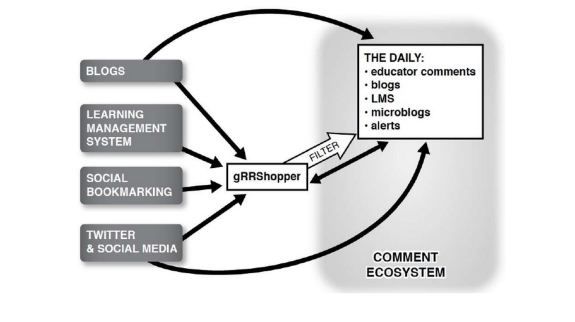![SDO's Ultra-high Definition View of 2012 Venus Transit - 304 Angstrom]()
RIP Ray Bradbury
It was sadly and beautifully fitting that Ray Bradbury died on Tuesday, the day of the Venus Transit, a celestial event that will not happen again for another 105 years. The short story “All Summer in a Day,” about a class of students on Venus, was the first thing I read by the science fiction author. I was quite young – fourth grade perhaps – and quite distressed by it. But I fell in love with science fiction thanks to Bradbury’s stories. It’s always felt to me the most imaginative and most honest of literary genres.
From The Paris Review (2010), in which the interviewer asks whether Bradbury enjoyed writing:
“It’s obvious that I do. It’s the exquisite joy and madness of my life, and I don’t understand writers who have to work at it. I like to play. I’m interested in having fun with ideas, throwing them up in the air like confetti and then running under them. If I had to work at it I would give it up. I don’t like working.”
Politics and Policies
The state of Louisiana will make what Reuters calls a “bold bid to privatize schools” with a voucher program this fall that will shift public funding to private schools, including many religious and for-profit institutions. “The school willing to accept the most voucher students – 314 – is New Living Word in Ruston, which has a top-ranked basketball team but no library. Students spend most of the day watching TVs in bare-bones classrooms. Each lesson consists of an instructional DVD that intersperses Biblical verses with subjects such chemistry or composition.”
A handful of universities have agreed to the Obama Administration’s efforts to help make college costs more transparent. The U.S. Department of Education has designed a model financial aid award letter that will make it clearer for students (and parents) to see college costs, financial aid (with grants, loans, and scholarships clearly distinguished), and the estimated monthly payments for any loans, and statistics on college completion, retention, and loan repayment rates.
Updates and Upgrades
An interesting deal struck by McGraw-Hill and Western Governors University: a pay-for-performance business model with the fees the university pays for the course materials tied to the grades of the students using the materials in class. WGU pays a “deeply discounted” fee for the materials, and then a premium for every student scoring a B or better. “Through this new pay-for-performance model, universities and learning companies share in the accountability for student success and students gain access to premium educational materials while keeping costs low,” reads the press release. Inside Higher Ed has more details.
McGraw-Hill also announced that it’s partnered with Instructure so that its (fairly) new “McGraw-Hill Campus” product is integrated with Canvas. That means single sign-on access to courses, e-books, tests, PowerPoints, etc (and not just McGraw-Hill titles, says the company) from within the LMS.
Klint Flinley has a great write-up of the launch of Toronto-based HackerYou, a learn-to-code startup formed from Ladies Learning Code. Instead of day- and weekend-long workshops, the company will now offer longer courses – but it’ll keep the same student-to-instructor ratio (10:1).
BrainHive hasn’t launched quite yet – it plans to this fall. It’s still in private beta with a few schools and libraries, but it’s an idea worth watching. BrainHive offers a pay-as-you-go model for K–12 schools to check out e-books – $1 per book, from a catalog of 3000ish titles. School Library Journal has more details.
The new maker showcase site for kids, DIY, has just open-sourced a lot of its code. The rationale: “We want to help encourage kids to take things apart and discover for themselves the way the world around them works. When we release some code or submit a patch to make our HTML more readable for kids, we are doing so as to help ensure that we are building something that kids can learn from even in the most subtle of ways.”
Microsoft’s search engine Bing has partnered with the Encyclopedia Britannica to include the encyclopedia entries directly in Bing search result pages – a response, perhaps, to the new Google Knowledge Graph.
Mightybell, the latest startup from former Ning CEO Gina Bianchini which first launched last fall, has redesigned its site. Initially Mightybell was focused on learning-guides, of sorts. The redesign makes this more an online space for resource sharing and communication. As with Grockit’s recently launched Learnist, the comparisons to Pinterest are probably inevitable.
“The next step in the education revolution could look a lot like … Zynga,” is the opening line of a story in The Atlantic about Pearson’s Alleyoop. But I couldn’t get past that first sentence to read why anyone would think that’s a good or interesting thing or what’s new with Alleyoop. (Here’s my story on its launch back in February.)
Research and Data
Inside Higher Ed paints a (partial) picture of the students who are enrolling in the Stanford-model MOOCs. The data comes from a survey sent to those who signed up for last fall’s Machine Learning class (taught by Andrew Ng, who has since founded Coursera). Of the 104,000 enrolled, some 14,000 answered the survey. Half the respondents were “professionals who currently held jobs in the tech industry." 41% were software developers. Nearly 20% were grad students; 11.6% undergrads. Another notable demographic detail: 74% of registrants come from outside the US.
The CDC says that 1 out of every 3 teens texts while driving. The data comes from a larger survey about “youth risk behaviors,” and this was the first time the CDC asked about texting habits. Car accidents are the cause of 1 out of every 3 teen deaths in the US.
Some very depressing statistics for the class of 2012 (and for those who’ve graduated high school in recent years): the employment outlook is grim. According to a report from the John J. Heldrich Center for Workforce Development at Rutgers University, only 16% of those who’ve graduated since 2009 have been able to find a full-time job. Some 56% of those surveyed said they expected to have less financial success in their lives than their parents.
Funding
The devastating budget cuts in Philadelphia have prompted Science Leadership Academy to turn to crowdfunding to raise money for the purchase of school laptops (SLA is a 1:1 laptop school). Dear Apple: do the right thing. Pick up the tab. I mean, you could do it for every school, but at the very least the ones that appear in your education commercials.) In the meantime, the rest of us can chip in some money for the cause.
Smarterer, the test-taking platform where job-seekers can showcase their skills (and test-taking abilities), has raised $1.75 million in funding, reports Techcrunch.
Congratulations to Mathalicious for reaching its (revised) Kickstarter goal.
Contests
Google has announced the 15 finalists for its Science Fair. Among the finalists, Sakhiwe Shongwe and Bonkhe Mahlalela from Swaziland who’ve also won the Science in Action award, sponsored by Scientific American, for their project which explores the use of hydroponics for subsistence farming.
Udacity has launched its own contest for secondary students. Sign up and complete courses, earn points, win a trip to the Stanford Artificial Intelligence Lab.
Image credits: NASA Goddard Space Flight Center
![]()
![]()
![]()




























